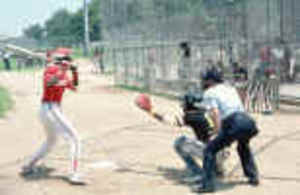In this article you will find an example of diagnostics process and change strategies for team and interpersonal skills. In this example I take a company that is looking to increase sales by 50% over the next quarter and address common issues that happen among departments.
With your corporate sales increasing over 50% over the next two quarters, you can expect overtime will be needed to meet these goals. In this article we are going to address the following issues that may occur.
1.
Increase in absenteeism from several departments
2.
Resignations are on the rise
3.
Division staffing goals are at an all time low
4.
Overtime by employee’s to meet production goals
5.
Employee motivation has been slow decreasing having a negative impact on employee performance
The first step I would take in solving these issues you have having among your departments is to find out why absenteeism is increasing and resignations are rising. You can achieve this by conducting exit interviews and finding out why employees are absent. From past experience, I have concluded a couple of reasons why this is taking place. Your wages or benefits your company offers may not comparable to the industry standards. This can also account for division staffing goals being at an all time low. Too much overtime could be another reason. From your meeting notes, you said that production equipment has been running non-stop for several months. This means that the employee’s have been running non-stop for several months. Even though your company offers overtime, you still may be having employee burn-out. It is important that your division staffing is increased and training of new employee’s starts immediately.
I would recommend using the Analytical Diagnostic Model. Since your division is divided into 7 departments which all dependent upon each other for success. This model focuses on 4 areas. The 4 areas are: Degree of departmental structure, member’s orientation toward time, member’s orientation toward others, and member’s goal orientation. (Brown and Harvey, 2006, pg 139). The reason I would recommend this type of model is because you will be able to determine the department’s attitudes’ towards the other departments. The company can also determine how much they may rely on one department over another to get the task done.
To change the present culture, I would recommend that you use employee empowerment techniques. Moving the over attitude of the employee from an “I just work here” to a shared vision and goals. (Brown and Harvey, 2006, pg 242) You can accomplish this by allowing the delegation of power and decision making at the lower levels. (Brown and Harvey, 2006, pg 241).
The increase in overtime and job production could cause job burnout. There are stress management intervention techniques to help employees deal with stress on the job; however the disadvantage to this type of program is that it actually doesn’t reduce the stress. (Brown and Harvey, 2006, pg 254). As I stated earlier, the best way to over come the need for additional overtime is to increase your hiring tactics. Develop recruiting programs so that your division staffing goals are not at an all time low.
A common problem can be team interdependence, another words, as you’re described, each department is dependent on the other for success. Inter-group interventions between departments include a better ways of working together, increased recognition of interdependence, less competition and more collaboration. (Brown and Harvey, 2006, pg 329). Inter-group team building techniques developed by Robert Black, Herb Shepard and Jan Mouton help members among departments reduce misunderstanding, open lines of communication among the departments. (Brown and Harvey, 2006, pg 328).
Another technique you could use is goal setting among the departments. Goals will give direction and purpose to the departments. A couple things you need to remember about goal setting is that the more difficult the goal, the better performance you will receive among your employees. However people may abandon goals if they become too hard. “People must be able to attain or at least approach them, otherwise, they will view the goal as impossible” (Brown and Harvey, 2006, pg 347)
Remember a hallmark to an effective team is the ability to communicate. (CTU, 2006)
REFERENCES:
Donald Brown and Don Harvey, 2006, 2001, “An Experimental Approach to Organizational Development Seventh Edition”, Pearson Education, Inc., Upper Saddle River, New Jersey, 07458.
CTU, Organizational Change, “Phase 2”, retrieved on January 30, 2006 from https://campus.ctuonline.edu/MainFrame.aspx



